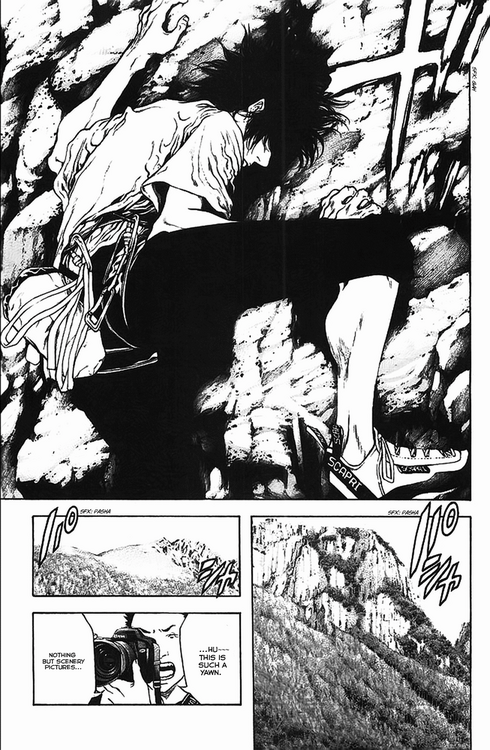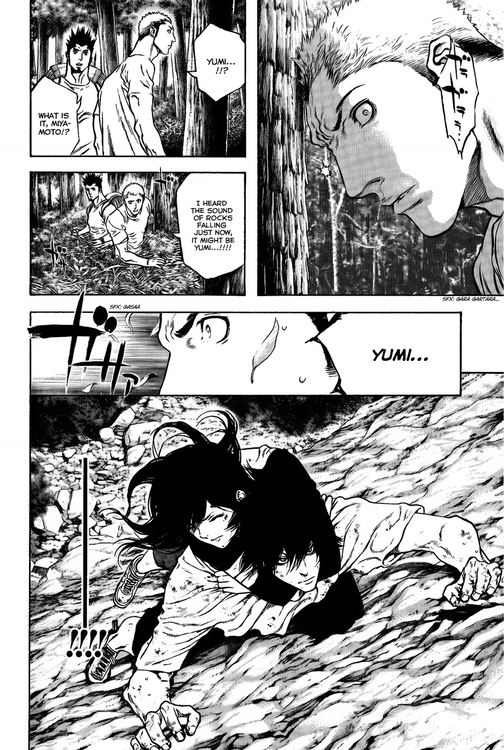Mountain Climbing for beginners?
|
|
to me it seems like an unheard of thing, i'm not a weak climber or not skilled but i am definitely not at the point in which i feel confident i could go to a mountain and climb it. i've struggled with converting routes in a gym with YDS to reality, as about everywhere i see has different grades for a route. i guess i'm wondering what i should be good at, climbing wise, (preferably not including the technical parts with gear and safety) in order to begin to climb real rock. if you do have reccomendations for safety and gear that are helpful, feel free to still include them. thanks for any help you can give me. |
|
|
Ronan Finney wrote: what i should be good at, climbing wise, (preferably not including the technical parts with gear and safety) in order to begin to climb real rock. Are you planning to free solo everything? If so, that’s really not a good idea |
|
|
This is a really broad question without a simple answer, and entire books have been written on it. I’d recommend reading “The Freedom of the Hills” if you want a real overview. This will probably also help you to ask more specific questions about the parts you don’t understand or are having a hard time with so you can get some more useful answers. Finding someone who already has experience climbing outdoors and can teach you or climb with you in person is even better. Or you can take a class with a guide to learn some of the basics. There are plenty of mountains that require no real rock climbing to get to the top of (mountains with mandatory 5th class are the exception, not the rule). These can be done as hikes or scrambles by people with no climbing experience. They will teach you a lot of things that will be helpful if you do ever want to climb more technical mountains. |
|
|
i appreciate your advice and book reccomendations, thank you. i asked not about gear because i knew it was soemthing i could study online or in books, while i wasn't sure about climbing outside. i am aware that gear and safety is a very important and essential part of climbing, but i have more faith in myself to learn and understand gear in climbing. i was worried more that every rockface i would try would be something too hard for me and i would have to train more and become stronger before even thinking of climbing real rock. i figure that climbing faces and cliffs like this are more about endurance than holds necessarily. unfortunately, all i can do as of now is train in the gym and gain knowledge on climbing because i live in florida, and i don't believe i'm near any real routes where i could apply skill practically. i appreciate what you said, and i'll definitely check it out, thanks. |
|
|
definitely not, i just want to be sure on my strength when starting to climb real rock. |
|
|
Now I see more of where you are coming from. From a physical standpoint, the strength and technique you get in the gym will definitely help with outdoor climbing, but your first time on real rock will still be a major adjustment. At the beginner-intermediate level, routes outside are often less than vertical and have smaller holds than those in the gym. Outdoor climbing relies much more on footwork than it does on arm strength when compared to the gym, and most of your weight is typically on your feet. Practicing good footwork on bad holds will help. If your gym has any slab climbing areas (less then vertical) with small holds and balancy moves, those might translate more to real rock than overhanging routes with bigger holds, which are extremely rare outside. These can teach you how to smear, getting your feet to stick to the wall or to volumes using pressure and friction when there aren't any other good footholds. Vertical routes with small holds (crimps and edges) are also more similar to what you are likely to encounter at a typical outdoor area, and are worth training on. If your gym has any cracks, learning to crack climb can help prepare you for traditional climbing, which is the main style of climbing used for getting up mountains. Crack climbing outdoors is much more enjoyable, but I learned the basics of it in the gym, and still practice it there frequently (I'm lucky to have a gym with really great cracks though). One other big difference is that outdoor climbing often has many possible holds, and it's up to you to figure out which ones to use. I'm not sure how you would go about practicing for this other than focusing on using good technique and climbing thoughtfully. Learning to lead climb in the gym will also be immensely helpful if you haven't yet done that, because that's a technical skill that you will use outdoors. Some of the best climbers in the world got really strong climbing plastic and then quickly transitioned to climbing at a very high level outdoors, so it's definitely possible. But also be prepared for the fact that climbing 5.11/5.12 in the gym doesn't necessarily mean you won't get scared on 5.6 or struggle on 5.9 when you start outside. In the same vein, reading about anchor building and the safety/technical side of things will provide a good foundation that will help you to learn faster outside, but it's not the same thing as real experience, and will still take some time before you are competent. It's easy to read so much that you feel like an expert, and that can lead to dangerous situations and humbling experiences. Not saying this is you, but it's worth mentioning because it's a common issue for people with high stoke and limited opportunities to climb. You might also find this thread relevant: https://www.mountainproject.com/forum/topic/126707769/climbing-grades-indoor-vs-outdoor |
|
|
Collin H wrote: Thank you very much, this looks really great advice and I appreciate it a lot. I'll try my best to learn as much as I can and practice humility when I'm climbing outside for the first time. Unfortunately, all my local gyms have little to no areas you could really call 'slab'. There's a few spots but I feel most gyms have small inclined sections and not anything I've seen that really looks like a real rock I'd see. I do understand it's not really a thing for beginners because most people don't have a ton of forearm strength, but it's sort of hard for me to approach. There is a giant crack at my gym but I'm not strong or skilled enough to climb to the top, also no crack gloves to try a hand jam either. I'll try my best to apply all your wisdom at all my gym visits. Do you know of any routes near Florida, or possibly Colorado? Planning on visiting there one day hopefully soon. Again, Thank you. |
|
|
Ronan I would just hire a guide next time you are in an area with climbing. It's the best way to learn if you don't have a community that can teach you. |
|
|
Connor Dobson wrote: This. Hire a guide for more than one day. Go to a place that has a wide range of grades and start experimenting. Start with single pitch top rope climbs. |
|
|
Move to where there is real rock climbing. /profit. |
|
|
Guys, this is a 16 year old kid in Florida. Telling him to shell out hundreds of dollars for a day of guiding in the mountains may not be something that he can do. Ronan, it sounds like you are just talking about climbing ANY outdoor routes? Or are you thinking really getting into the mountains? I think you would get better replies if you provided some specifics. Even if there is just a picture of something or someone and you're thinking "I want to climb stuff like that", that would really help folks give you good advice. Climbing is really diverse and varied once you leave the gym so I would try to be specific about what you're envisioning. |
|
|
Sam Bedell wrote: Haha. I'd like to start probably with outdoor bouldering at crags to begin with to get my fingers used to real rock probably. I really am interested in climbing mountains so I thought I may be able to begin with easier routes with not much safety required, I am aware I'll need a rope and such. However, I figure that there will be some routes I begin with that only require a few quickdraws or cams or nuts or whatever. I want to start with simple routes with a little safety and progress onto bigger climbs on summer mountains. I want to try winter mountains too, but that's a completely different ball park I don't want to get into right now. Simply, I'd like to know of a few mountain routes in the continental United States where I can begin. I think I'd like to start with trad climbing. As for the topic of "I want to climb stuff like that", here are some photos of what really inspired me to start climbing. When I send these, please don't think of me as a fool who lacks humility and thinks he is the next pro climber or a kid who saw a a K2 edit on TikTok and wants to become a mountaineer. These photos I feel reflect what type of rocks I'm interested in as of now, to be specific. I also do not want to free solo as Mori is doing here. Edit: Sorry if I didn't answer your question well. |
|
|
Bb Cc wrote: LOL My mom supports my climbing endeavours and climbs herself. I'm sure that when I first climb crag it will be with her. I assume that if I ask and it's not terribly expensive and we have time for it, then it will be a yes. I do also have to be allowed to go in the first place, hopefully. |
|
|
My reccomendation stands, hire a guide to start out with, a guide can take you and your mom out for a day of outdoor climbing. There is no such thing as routes with little safety requirements. There are routes that have a low chance of falling but the consequences are still severe and deadly. People solo the flatirons all the time because they are very easy but there are still fatalities. You don't want to be learning how to move on real rock with the consequences of leading in gear that you don't know if you can place well. Most people follow for quite a while before leading on gear to learn how to place gear and climb. The rocks will still be there, there is no rush. There are also mountains that are not technical in the summer if you just want to climb a mountain. Come to CO and walk up grays :) |
|
|
Ronan Finney wrote: No need to start with bouldering. Start with what is easiest to access. If you have multiple options, start with what is inspiring. I started following trad right away. Back in the day that was all there is and plenty of crushers started there. There are two general skill areas you need to get: movement technique and equipment usage. You should work on one at a time. First time you setup a TR put it on something easier so you can focus on trusting the rope and figuring out the equipment. If you are going to try hard, do it with systems you already know well. Obviously there is not much outdoor climbing in Florida. Think about where you might go anyway this year. Will you visit family out of state? Be on a school trip? Visit a college? Check this site and other resources to see if there is some outdoor climbing you could try in the area. Looks like you want to climb hard, crimpy, vertical routes based on the manga you posted? I would use the map function on this site to find crags near where you might be, or that are in an area you plan to go. Then use photos to see what it looks like. If you see a specific route on here that you would love to do, link it in this thread and people can chime in on what specific skills you need and ideas for how to acquire them. |
|
|
WARNING: i am still a beginner but a beginner with some experience. started training in the gym December 2023 and first lead climb in March of 2024 (rated 5.3 lol) I trained in a rock gym and with a hang board at home during the winter months. My gym sessions were and still are focused on good footwork and endurance. I started by climbing, every 5.5 in the gym then every 5.6 and so on until failure (hands, body, and mind completely fail). Because I never hand a membership and only a ten-punch pass, id do this once a week. during the rest of the week, you would find me training on my hangboard or working on cardio or recovering. Do this until you can get into the 10s. If you're climbing, every route in the gym under a 5.10 and starting to break into the tens. you are HELLA strong enough to start climbing outdoors (physically, NOT mentally). Now days (about 1 year later) i train very similarly in the gym but with some adjustment. I usually start on a single 5.6 and DOWN CLIMB THE SUCKER. then hop on a 5.7 and DOWN CLIMB IT!!!!!!! then to a 5.8 and DOWN CLIMB IT!!!!! then to a 5.9 and run laps till i feel a pump. usually 3 or 4 laps (no downclimb). then rest for a bit and hit tens until failure. once i fail, ill go back to the 8s and 9s and run laps. |
|
|
If you can swing it financially, consider a NOLS mountaineering course. They're targeted at people in your age range and will kickstart your outdoor adventure life. They're not just about mountaineering and climbing skills (although they are that). They're also about interpersonal relationships, leadership, and conflict resolution. And they're also about responsible use of the outdoors, self-reliance, and decisionmaking. I did a course at 17 and 25 years later I still use some of the outdoor skills, but I also use some of the decision making and conflict resolution frameworks in my professional life. |
|
|
Alexander G wrote: Sounds like a killer training plan I might try to apply some of your skills at the gym, I do need to work on my footwork and endurance. I usually only leave the gym when I'm too tired or beaten up to continue, but I'm sure I could go farther than that. I've been studying a decent amount - watching videos & taking notes, learning about safety, tying knots, knowing what to pack, & learning what I'll be approaching when faced with a rockface. Definitely will use your advice, thanks for the help, Gorshoff. |
|
|
Connor Dobson wrote: Copy that, I just thought that when a route on here said 'Single Pitch', I thought it meant you only needed one piece of safety? Saying it now, I feel stupid. Anything like that would be just a boulder, right? Might be a while, but I'll probably ask about what gear I'll need once I find routes in insert climbing destination here. |
|
|
Ronan Finney wrote: Nope haha, single pitch just means one rope length |
|
|
You can approach mountaineering from the hiking, scrambling, backpacking side of mountaineering. Especially if you enjoy those activities, there are plenty of skills to be learned there over time. The Freedom of the Hills book addresses these skills too, not just the gear. There is something to be said for figuring things out for yourself as opposed to/in addition to hiring a guide. With a combination of the two, you'll be confident of the skills and you'll own them. |

 Continue with onX Maps
Continue with onX Maps Sign in with Facebook
Sign in with Facebook



























